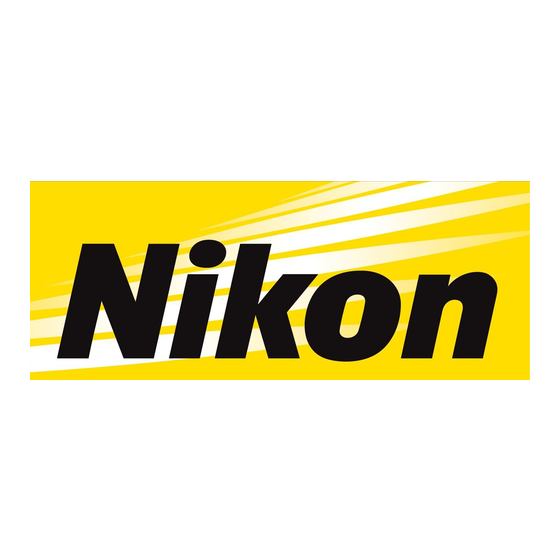Nikon ECLIPSE E600 POL Руководство по эксплуатации - Страница 25
Просмотреть онлайн или скачать pdf Руководство по эксплуатации для Микроскоп Nikon ECLIPSE E600 POL. Nikon ECLIPSE E600 POL 48 страниц. Polarizing microscope

3. Operation of Each Part
I
m
Auto-photo switch (for photomicrography)
The color temperature of the lamp varies according to the voltage.
If
the voltage is high. the color
temperature of the lamp increases and the light becomes bluer. If the voltage is low. the color
temperature of the lamp decreases and the light becomes redder. Therefore. to obtain the best
color reproduction in color photomicrography. it is necessary for the lamp voltage to he kept
constant. When using daylight-type color film. the standard setup is to use the color balancing
filter (NCB 11 land set the lamp voltage to 9 V.
The auto-photo switch is used to automatically set the standard lamp voltage (9 V
l.
If the images
on color film shot with the auto-photo switch on are
reddish or bluish. finely adjust the voltage with the auto-
photo voltage selection switch. The center position of the
5-level slide switch is roughly 9 V. Sliding the switch
forward increases the bluish tint of the light. while sliding
the switch towards the hack increases the reddish tint of
the light.
Use commercially available color compensation filters
(CC filters) if this adjustment does not resolve the
problem.
m
Oil-immersion operation
(using an oil-immersion type of objective and condenser)
An objective marked "Oil" is an oil-immersion type.
These objectives are used with the immersion oil applied
between the specimen and the tip of the objective. The
immersion oil is provided for the microscope.
Bubbles in the oil will adversely affect the viewing of
the image. so he careful to prevent the formation of air
bubbles. To check for air bubbles, remove the
eyepieces. fully open the field and aperture diaphragms.
and look at the exit pupil of the objective within the eyepiece tube. (The exit pupil will appear as
a bright circle.) When it is difficult to see if there are any bubbles. mount a centering telescope
(sold separately) on the eyepiece sleeve with an adapter (sold separately). Then. while turning the
eyepiece on the centering telescope to change the focus. look through the centering telescope for
air bubbles. If there are bubbles in the oil. remove them by one of the following methods:
• Turn the revolving nosepiece slightly, moving the oil-immersed objective back and forth once
or twice.
• Add more oil.
• Remove the oil and replace it with new oil.
Use as little oil as possible Uust enough to fill the space between the tip of the objective and the
specimen). If too much oil is applied, the excess will flow onto the stage.
25
